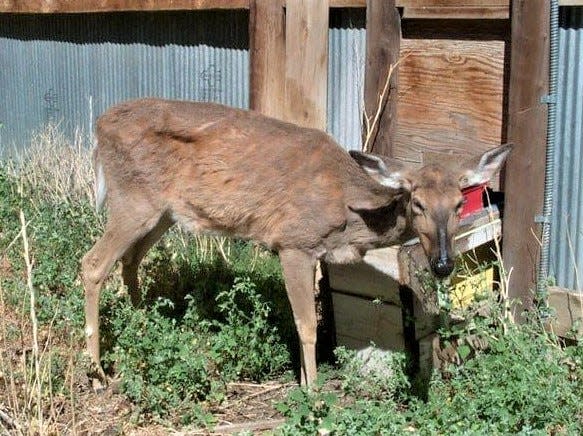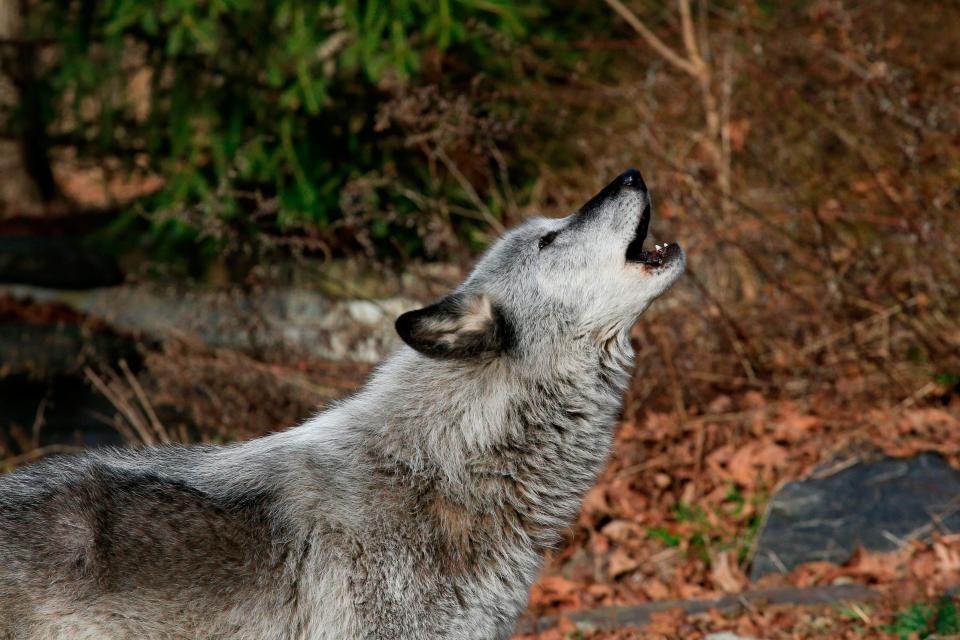What to know this hunting season in NY: Deer abundance, CWD, will you see a wolf?
It’s a tradition that draws over half a million people to New York’s fields and forests every year.
New York’s 2022-23 firearms season for big game opens Saturday, Nov. 19, and runs through Dec. 11 in the Southern Zone outside the Adirondacks, Westchester and Suffolk counties.
The state Department of Environmental Conservation (DEC) sold nearly 580,000 hunting licenses for the 2021-22 season. The “Holiday Hunt,” a new feature last year that extended the late bow and muzzleloader seasons from Dec. 26 to Jan. 1, also returns this winter.
Deer season provides hunters with an inflation-proof source of meat that can last throughout the year. Hunters can also elect to donate their harvest to the Venison Donation Coalition, which distributes meat to food pantries across the state.
Here are three topics of conversation for New Yorker hunters to know before heading afield this fall.
Deer overpopulation a problem in these spots
Deer are ubiquitous across New York’s backyards, forests and fields. Over 95% of the population was wiped out in the 19th century, but management programs and a changing landscape helped deer numbers rebound.
DEC is currently looking to reduce deer densities in a handful of areas throughout the state, mostly in the Hudson Valley, on Long Island and across a swath of Central New York. Management objectives for most of the state aim to hold the deer populations stable. DEC objectives are based on the ecological impacts of deer and public preferences.
Overpopulation can create a variety of problems, including crop damage, increased vehicle collisions and the spread of tick-borne illnesses. High-density deer populations also devastate forest plant communities.
DEC classifies the current rate of forest regeneration in most of the state outside the Adirondacks as “vulnerable” or “not acceptable.” Deer have been identified as the major culprit in many areas.
Hunting serves an important function to keep deer populations in check, filling the role once occupied by apex predators. New York hunters harvested over 211,000 deer during the 2021-22 season, down 17% from the previous year.
“We’ve eliminated all of the natural predators, for the most part,” said Dr. Krysten Schuler, a wildlife disease ecologist and assistant research professor at Cornell University's Wildlife Health Lab.
“There’s a lot of people now who don’t want to allow hunters on their property, necessarily, so there’s a lot of refuges for deer where they’re not accessible for hunters. It makes it more difficult to do any sort of population management.”
For subscribers:Going hunting this fall? How New York's new gun laws affect hunters
More:Whitetail rut prediction for 2022: What to expect while hunting this fall
Should you worry about Chronic Wasting Disease?

Overpopulation can also leave deer more susceptible to parasites and diseases. Among the most deadly is chronic wasting disease (CWD), an untreatable disease of the brain and nervous system that leaves deer with an emaciated appearance. Abnormal behaviors like disorientation, loss of bodily functions and extreme thirst are also telltale signs of CWD.
CWD is now found in 30 states. New York is the only state to successfully eliminate CWD, with a 2005 outbreak among captive and wild deer in Oneida County halted before it could spread. DEC tested over 2,700 deer for CWD during the 2021-22 hunting season, and none tested positive. CWD remains on New York’s doorstep in neighboring Pennsylvania.
Deer, elk, moose or caribou harvested outside New York must be deboned before being transferred into the state.
“Some people throw up their hands and say it’s going to walk in eventually, which may be true, but a hunter driving it across the border at 65 miles per hour is going to move the disease a lot faster than any deer walking,” said Schuler. “The human-assisted movement is something that we can manage through education and outreach whereas the wild populations are more challenging.”
The highly contagious disease is spread through the saliva, urine and feces of infected animals. Plants and soil can also be contaminated and infectious for years.
Schuler, who was recognized by the National Deer Association as its 2021 Professional Deer Manager of the Year for her leadership in slowing the spread of CWD, said New York’s hunters are on the frontline of prevention and detection.
While deer suffering late-stage CWD can exhibit a “zombified” appearance, Schuler also noted many hunters who have killed CWD-positive deer harvested animals that did not look sick.
More:Like any hunt, deer camp memories last a lifetime
Could you see a wolf while hunting this fall?

Apex predators like wolves and mountain lions once kept deer numbers in balance before the arrival of European settlers.
Could those creatures that once stood at the top of the food chain be making a comeback?
Genetic testing of a canid killed by a hunter in Otsego County during the 2021 coyote season has confirmed that the animal was a wolf, not its smaller cousin. DNA tests indicate the animal is most likely from the Great Lakes population of wolves, according to the DEC.
The origin of the Otsego County wolf is still being investigated. The wolf was likely a male that weighed over 80 pounds. It marked the third time a wolf has been confirmed in the wild over the past quarter century in the state. DEC noted that wild wolves are present in portions of Ontario and Quebec, and it is possible for these animals to travel into New York.
“There’s been documented long-distance movements of wolves and mountain lions before. It happens rarely,” said Schuler. “It’s definitely an interesting finding.”
Wolves are protected in New York as an endangered species and should not be targeted by hunters this fall and winter.
Chris Potter can be reached at cpotter@gannett.com or on Twitter @ChrisPotter413. To get unlimited access to the latest news, please subscribe or activate your digital account today.
This article originally appeared on Binghamton Press & Sun-Bulletin: What to know about New York deer hunting season, CWD concerns, wolves

